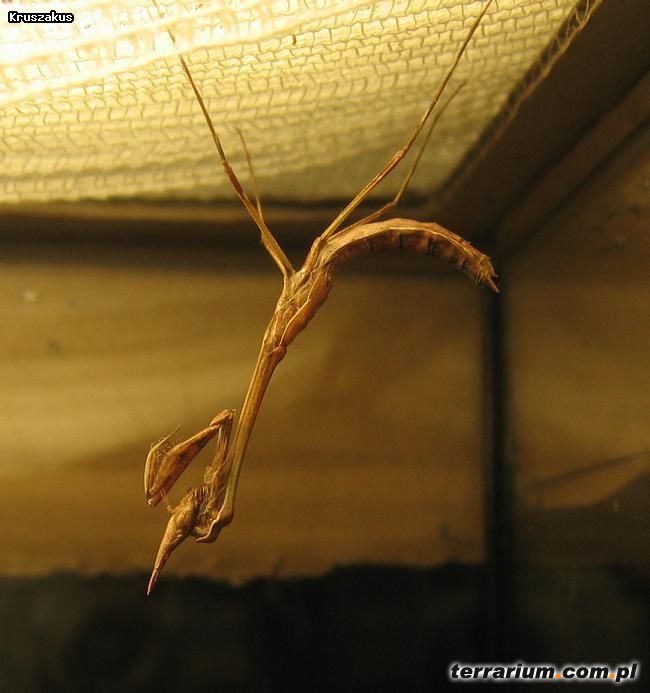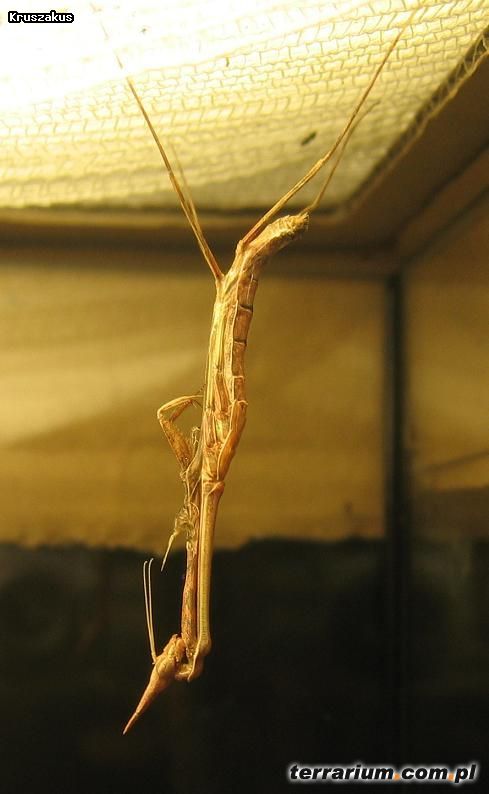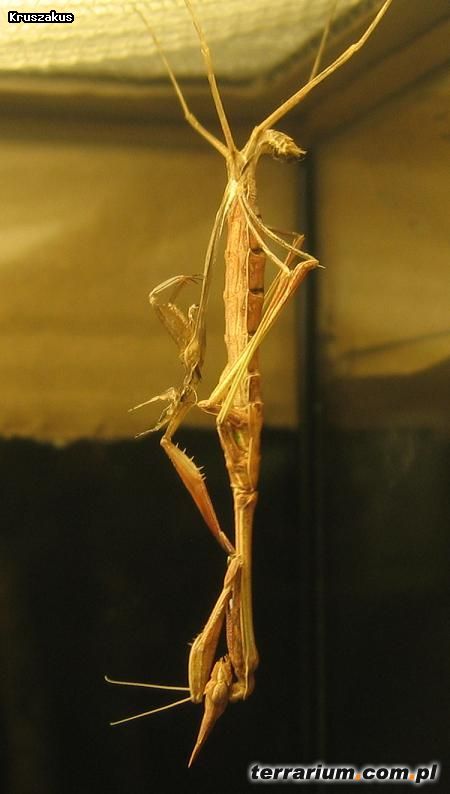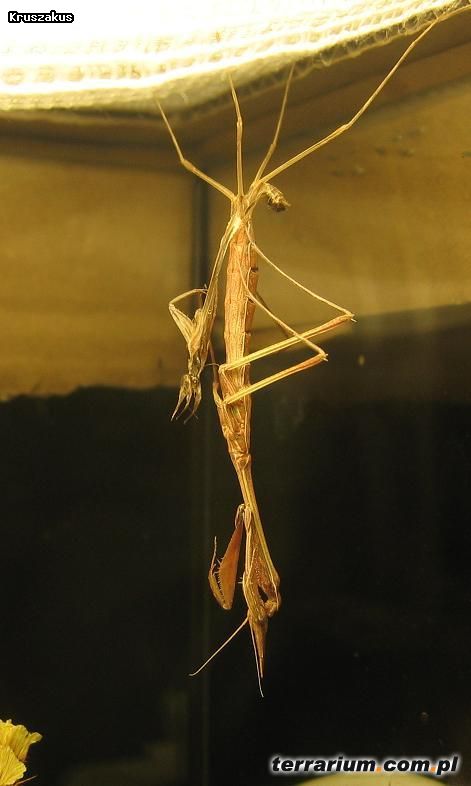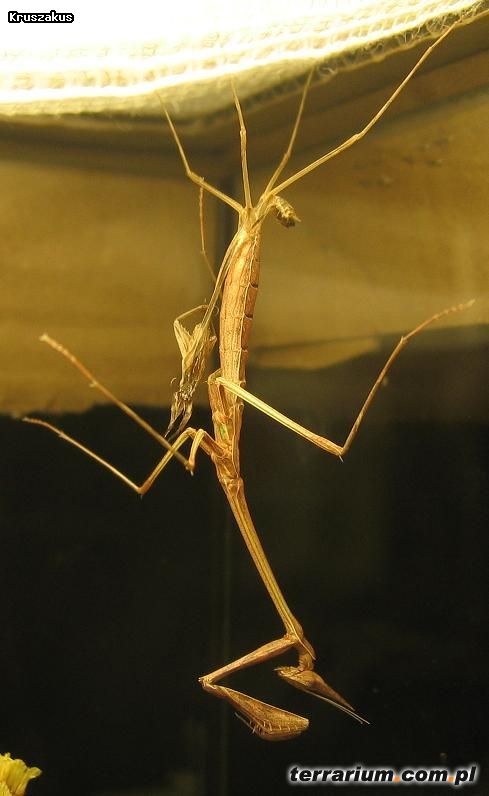I must say that I was surprised by the lack of difficulty with this species – provided with enough heat and food, this is probably the easiest mantis to rear that can be found! No insta-deaths, quite communal (with some sad accidents), males were quite eager to mate – you cannot ask for more.
I started out with eleven L1/L2 nymphs on 09.12.2007. 1st instar was of a size of P. chlorophaea L2, but the following sheds increased the size of nymphs considerably. At that time I was unable to provide them with the proper food (wingless fruit flies did not cover enough terrain) and then I noted the first case of cannibalism – but changing fruit flies from wingless to airborne ones obviated the recurrence of this problem.
From the beginning I kept my I. lateralis at 35-40C daytime – they thrive at higher temperatures; room temperatures are okay for the night. Misting was seldom – I actually ditched it after they had gone through the second molt.
Before I even had a chance to do some pictures of them, I had a couple of L4 – it took just two weeks to molt at least two times for each nymph.
4th instar seemed to feed greedily on fruit flies, small wax moths and house flies, the latter became the base of their diet for the rest of their lives. With a constant supply of food, that perpetuated the molting process even more – intervals between each shed were like 7-8 days! That was insane!
The transition fro sub-adult to adult was amazingly quick, not even two weeks. Unfortunately I did not capture the final molt with my camera, but it still would not be the greatest quality, so maybe you should see it with your own eyes – a very smooth process. Adult females are very impressive in terms of size - at least 3' long, and capable of handling large prey - but it has to be airborne only. Here you have an adult female:

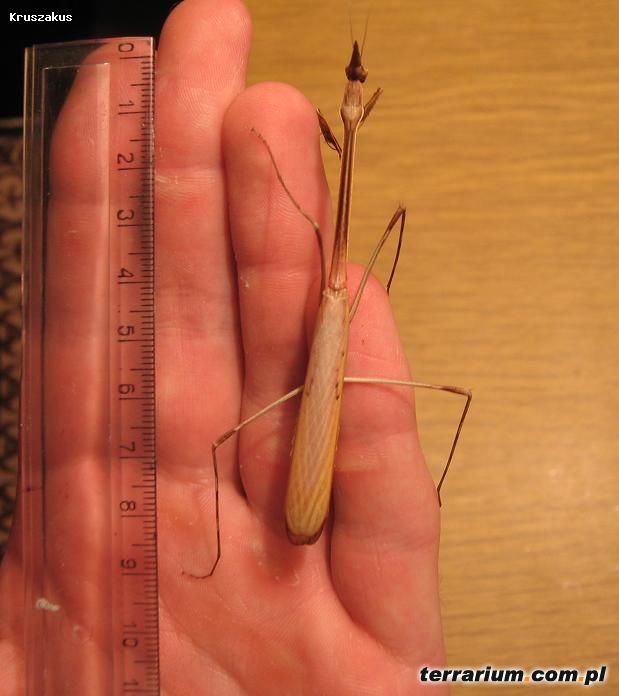
Adult females started laying their first ooths after only one week, with the males still being sub-adult, it was rather nerve wrecking to see so many infertile ooths being laid. Especially since they are the real deal when it comes to depositing ooths!

Soon my first male matured – I christened him “Rupert”, his feathery antennae were just stunning!
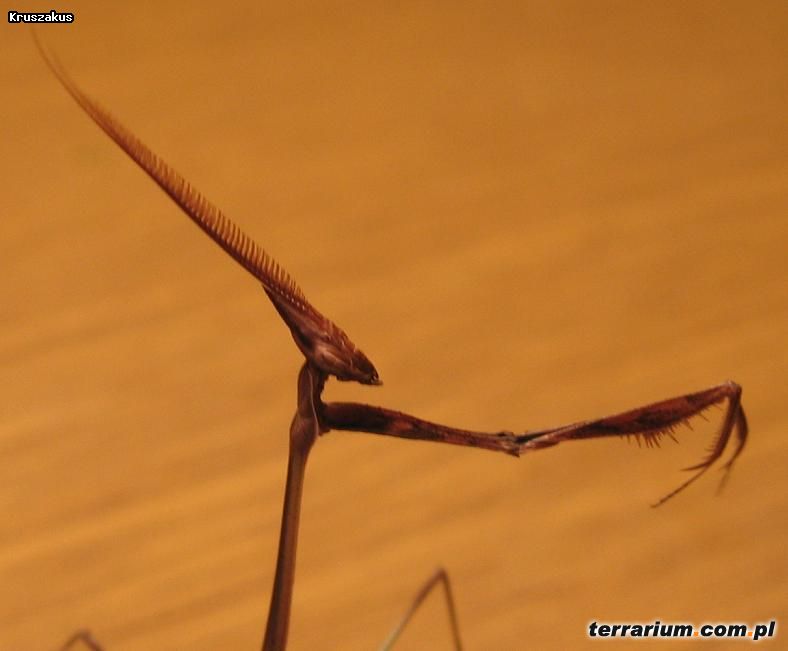
I let him mate after four days of being adult – he knew what to do and did his job with the females, he still does actually...
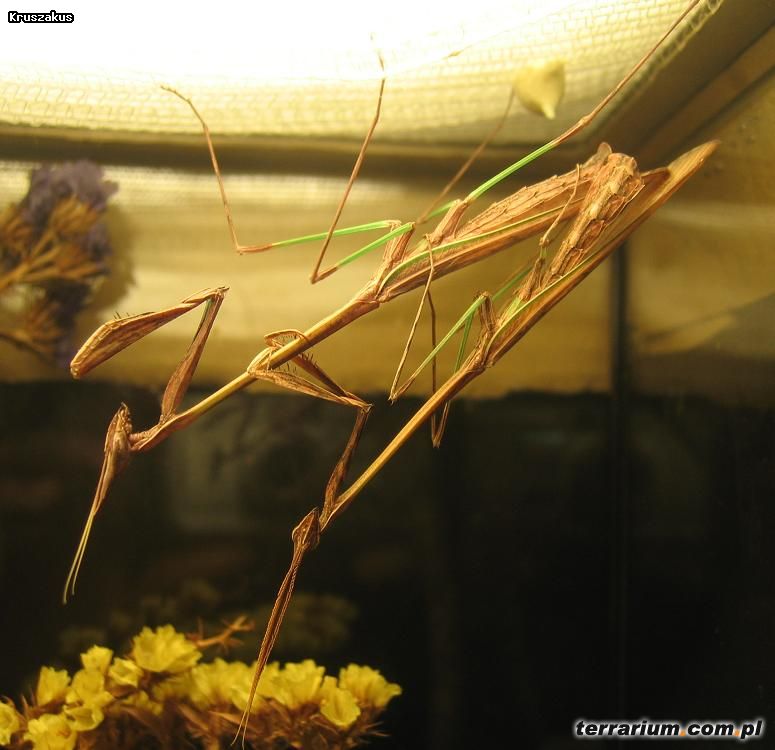
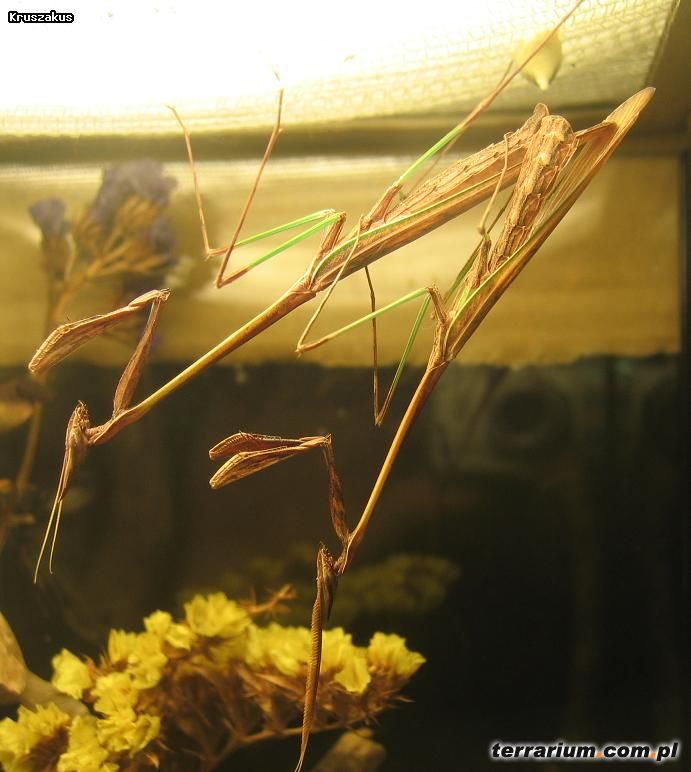
Today, after only two three weeks since the mating took place, and the ooths were laid – my second generation of. I. lateralis was born, which of course makes me happy as heck!
If anyone would like to ask any questions, I'm right here.
I started out with eleven L1/L2 nymphs on 09.12.2007. 1st instar was of a size of P. chlorophaea L2, but the following sheds increased the size of nymphs considerably. At that time I was unable to provide them with the proper food (wingless fruit flies did not cover enough terrain) and then I noted the first case of cannibalism – but changing fruit flies from wingless to airborne ones obviated the recurrence of this problem.
From the beginning I kept my I. lateralis at 35-40C daytime – they thrive at higher temperatures; room temperatures are okay for the night. Misting was seldom – I actually ditched it after they had gone through the second molt.
Before I even had a chance to do some pictures of them, I had a couple of L4 – it took just two weeks to molt at least two times for each nymph.
4th instar seemed to feed greedily on fruit flies, small wax moths and house flies, the latter became the base of their diet for the rest of their lives. With a constant supply of food, that perpetuated the molting process even more – intervals between each shed were like 7-8 days! That was insane!
The transition fro sub-adult to adult was amazingly quick, not even two weeks. Unfortunately I did not capture the final molt with my camera, but it still would not be the greatest quality, so maybe you should see it with your own eyes – a very smooth process. Adult females are very impressive in terms of size - at least 3' long, and capable of handling large prey - but it has to be airborne only. Here you have an adult female:


Adult females started laying their first ooths after only one week, with the males still being sub-adult, it was rather nerve wrecking to see so many infertile ooths being laid. Especially since they are the real deal when it comes to depositing ooths!

Soon my first male matured – I christened him “Rupert”, his feathery antennae were just stunning!

I let him mate after four days of being adult – he knew what to do and did his job with the females, he still does actually...


Today, after only two three weeks since the mating took place, and the ooths were laid – my second generation of. I. lateralis was born, which of course makes me happy as heck!
If anyone would like to ask any questions, I'm right here.
Last edited by a moderator:




